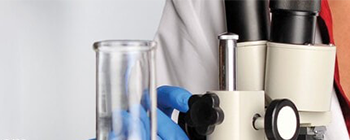Learn More
Phospho-Histone H2A.X (Ser139) Monoclonal Antibody (CR55T33), eBioscience™, Invitrogen™
Mouse Monoclonal Antibody
Supplier: Thermo Fisher Scientific 14986582
Description
Description: The CR55T33 monoclonal antibody recognizes phosphorylated serine 139 of human and mouse H2AX. H2AX is a member of the H2A histone family that complex with DNA and other histones to form the repeating nucleosome units characteristic of eukaryotic chromatin. Nucleosomes consist of approximately 147 base pairs of DNA wrapped around an octamer of histones composed of two each of the four histone proteins: H2A, H2B, H3 and H4. After induction of DNA damage such as double-strand breaks by irradiation, genotoxic stresses, replication errors or gene recombination, PI3K-like kinases (e.g., ataxia telangiectasia mutated (ATM), ataxia telangiectasia Rad-3-related (ATR), and DNA-dependent protein kinase (DNA-PK) are activated to phosphorylate serine 139 in H2AX. This early phosphorylation event plays a critical role in recruiting proteins involved in DNA repair. The monoclonal antibody CR55T33 recognizes a single band of approximately 15 kDa on reduced cell lysates from Jurkat cells stimulated with etoposide. Applications Reported: This CR55T33 antibody has been reported for use in intracellular staining followed by flow cytometric analysis, western blotting, immunohistochemical staining of formalin-fixed paraffin embedded tissue sections, and immunocytochemistry (fluorochrome-conjugated CR55T33 is recommended for use in intracellular flow cytometry).
Histone H2A.X (H2AX) is a member of the histone H2A family which is one of the four core histones making up the nucleosome core particle. In eukaryotes, DNA double strand breaks (DSBs) have been shown to trigger the phosphorylation of serine 139 at the carboxy terminus of histone H2AX resulting in gamma-H2AX. The phosphorylation of H2AX can be detected by Western blotting or immunofluorescence, revealing the frequency of DSBs. The phosphatidylinositol 3-kinases have been implicated in H2AX phosphorylation, but it is unclear if ATM is the primary H2AX kinase or if other members of the family such as DNA-PK and ATR contribute in a similar manner. Structurally, H2A.x contains 143 amino acid residues. Histone H2A.X is considered a basal histone, being synthesized in G1 as well as in S-phase, and its mRNA contains polyA addition motifs and a polyA tail along with the conserved stem-loop and U7 binding sequences involved in the processing and stability of replication type histone mRNAs. There are two forms of Histone H2A.X mRNA, one about 1600 bases long and contains polyA; the other about 575 bases long, lacking polyA. The short form behaves as a replication type histone mRNA, while the longer behaves as a basal type histone mRNA. Histone H2A.X maps to the 11q23.2-q23.3 region of the human chromosome. Histone H2A.x contributes to histone-formation and therefore the structure of DNA. Histone H2A variant H2A.x specifically regulates the interaction of MDC1 (mediator of DNA damage checkpoint protein 1), a DNA repair protein to the sites of DNA damage.Specifications
| Phospho-Histone H2A.X (Ser139) | |
| Monoclonal | |
| 0.5 mg/mL | |
| PBS with 0.09% sodium azide; pH 7.2 | |
| P16104, P27661 | |
| H2AX | |
| Affinity chromatography | |
| RUO | |
| 15270, 3014 | |
| 4° C | |
| Liquid |
| Flow Cytometry, Immunocytochemistry, Immunohistochemistry (Paraffin), Western Blot | |
| CR55T33 | |
| Unconjugated | |
| H2AX | |
| AW228881; gamma H2AX; gammaH2ax; H2A histone family member X; H2A histone family, member X; H2A.X; H2A.X variant histone; H2A/X; h2afx; H2ax; H2AX histone; Hist5-2ax; histone 5 protein 2ax; histone H2A.x; Histone H2a/x; Histone H2AX; RGD1566119; similar to H2A histone family, member X; zgc:56329 | |
| Mouse | |
| 100 μg | |
| Primary | |
| Human, Mouse | |
| Antibody | |
| IgG1 κ |
For Research Use Only.




